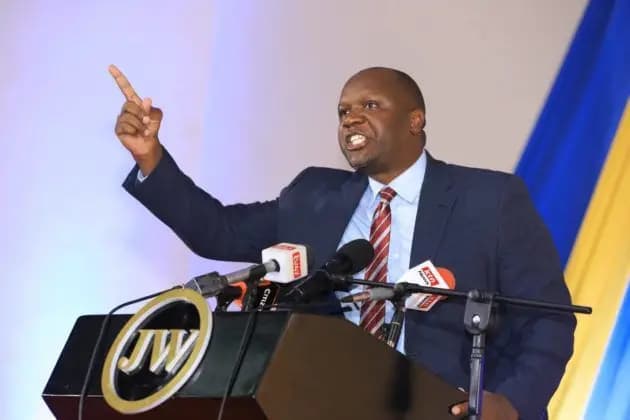Loading News Article...
We're loading the full news article for you. This includes the article content, images, author information, and related articles.
We're loading the full news article for you. This includes the article content, images, author information, and related articles.
Nairobi's Central Business District experienced significant flooding following heavy rainfall on Friday, October 3, 2025, drawing sharp criticism from lawyer and politician Willis Otieno directed at Governor Johnson Sakaja's administration.

Heavy rainfall on Friday, October 3, 2025, transformed Nairobi's Central Business District (CBD) into a 'swamp,' according to lawyer and politician Willis Otieno. The downpour exposed persistent drainage challenges in the capital, prompting Otieno to publicly criticise Nairobi Governor Johnson Sakaja's leadership.
In a statement shared on his X account, Otieno accused the county government of failing to clear drainage trenches, attributing the widespread flooding and muddy streets to a lack of focus on critical infrastructure. He argued that Governor Sakaja has prioritised entertainment events and online trends over essential urban development.
Nairobi's drainage system has long been a point of contention, with residents frequently experiencing floods during rainy seasons. The city's infrastructure, originally designed to serve a population significantly smaller than its current five million, struggles to cope with rapid urbanisation and increased surface runoff.
Experts and city officials have previously acknowledged that the drainage network is outdated, poorly maintained, and often clogged by solid waste and construction debris. This leads to major streets like Moi Avenue becoming impassable, disrupting business and daily life.
The Nairobi County Government has, in recent years, allocated funds towards infrastructure development, including drainage. For the 2023/2024 financial year, KES 2.6 billion was allocated for roads, street lighting, stormwater drainage, and bridges. This was further increased to KES 2.9 billion for infrastructure development in the 2024/2025 budget. Additionally, the county increased its overall infrastructure development budget from KES 1.9 billion to KES 2.1 billion for the upcoming financial year, channeled through Ward Development Programmes.
Governor Sakaja has previously acknowledged the city's drainage system's inability to cope with heavy rainfall, citing capacity issues rather than just blockages, and pledged to expand infrastructure. In September 2023, the county unveiled a preparedness plan for anticipated El Niño rains, which included deploying 3,500 environmental officers to clean and unclog drainage systems.
Willis Otieno, a prominent lawyer and Deputy Leader of the Safina Party, has been vocal on governance issues and accountability. His critique highlights a common public sentiment regarding the perceived disconnect between county leadership and pressing urban challenges. Governor Sakaja, who took office in August 2022, has often emphasised his commitment to improving the city's infrastructure.
City residents have also been implicated in the drainage problem, with improper waste disposal contributing significantly to blockages. Efforts to address this include community engagement and public awareness campaigns on proper waste disposal.
Continued poor drainage poses significant risks, including increased traffic congestion, damage to property, public health concerns due to waterborne diseases, and economic losses for businesses. The perception of inadequate governance on fundamental issues like infrastructure can also impact public trust and political standing.
The specific timelines for comprehensive drainage system overhauls and the full cost implications remain largely undefined. The effectiveness of recent budgetary allocations and deployed personnel in mitigating long-term flooding issues is yet to be fully assessed.
Attention will be on the Nairobi County Government's response to the latest flooding incident and whether it will lead to accelerated efforts in drainage maintenance and expansion. The public and political discourse surrounding urban infrastructure ahead of future election cycles will also be a key area to monitor.